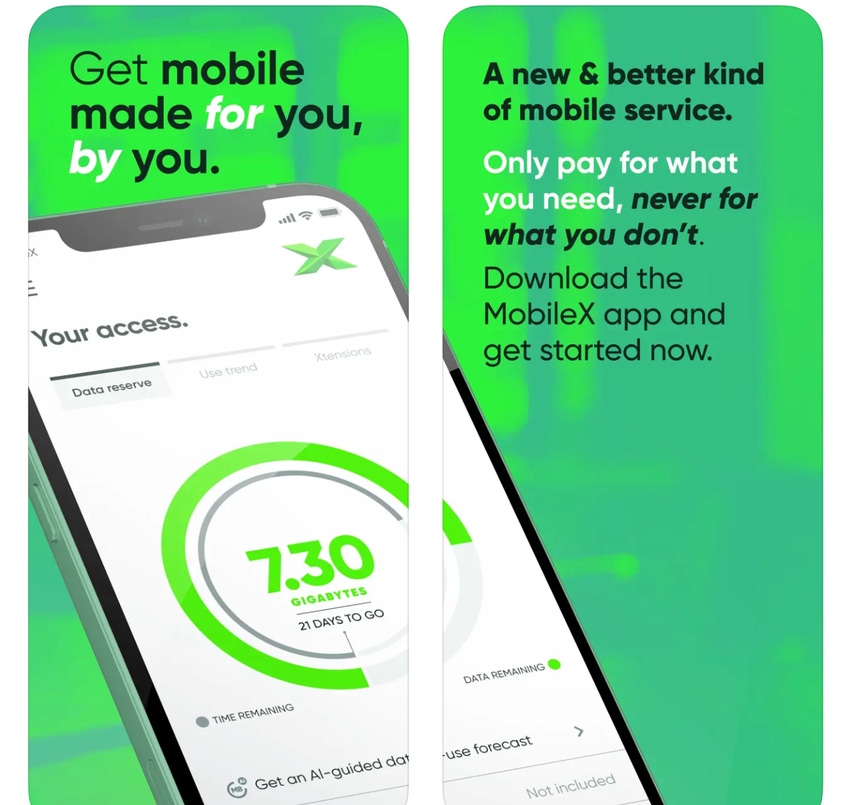MobileX, a new Verizon MVNO, believes investments into cloud native architecture and AI will give it an advantage in a changing industry.

MobileX, a new Verizon mobile virtual network operator (MVNO), says it is "cloud native to the core."
"We are just getting started, but the benefits of being cloud native already have major advantages over the traditional/legacy telecom technology stack," company executive Stuart Bird wrote in response to questions from Light Reading.
The startup – which launched commercial wireless services in the US using artificial intelligence (AI) technology earlier this year – said it spent several million dollars and three years developing a cloud native platform for its offering. Today the company's team totals around 40, including executives and customer care employees.
But, according to MobileX's Bird, all that work will allow the company to expand beyond the standard market for inexpensive MVNO services.
Bird said the company's approach allows it to "serve customers in real time when they need it." Bird added, "And the best part for natives like us, cloud computing and infrastructure is still in its infancy."
Building a platform
MobileX founder Peter Adderton first hinted at MobileX in 2021, following unsuccessful bids to buy back Boost Mobile and acquire Consumer Cellular. Adderton founded Boost Mobile in Australia in 2000 and then sold the US business to Nextel. He also fronted Amp'd Mobile, which filed for bankruptcy in 2007. He still operates a Boost-branded wireless business in Australia from his home in California.
Adderton's plans for MobileX gained ground when the company announced Verizon as its network partner. After a few hiccups, MobileX launched mobile plans designed to save customers money through AI-based usage estimates. "Personalized mobile saves you money," the company boasts.
"AI and machine learning predictions are one of our core differentiators but so is the fact we are 100% software and 100% hosted in the cloud," Bird explained. "We are scalable, extensible, and designed with the customer at the heart of our platform. We have limitless opportunities to create dynamic real time, hyper personalized experiences using AI, but it's our platform architecture that enables it."
Specifically, MobileX said it uses telecom-as-a-service (TaaS) vendor OXIO to tie into Verizon's legacy operations. MobileX's operations are routed into clouds including Amazon Web Services (AWS) and Google Cloud, and it uses web-based vendors including Stripe for payments, Zendesk for support, Contentful for website management and Lokalise for translations.
Like other leading-edge telecom companies, MobileX boasts that its platform runs on flexible microservices and application programming interfaces (APIs). The company said its XO.1 platform offers apps for customers, employees and partners, and APIs to support a library of tools for its front-end applications.
"Our design takes inspiration from a traditional customer data platform, but instead of powering marketing campaigns we power AI/ML solutions and a suite of microservices to deliver real-time, customized user experiences," Bird explained, adding that the company relies on "a combination of core network elements and abstractions developed in collaboration with our partners to deliver the MobileX experience on top of an existing wireless network."
That work is intended to make the company profitable in a way that sidesteps the traditional competitive dynamics in the MVNO market.
"We do not make money from wholesale wireless prices nor are we incentivized to sell more data like traditional carriers and MVNOs," Bird wrote. "We make money the same as all other similar platform companies like Uber, Netflix, Airbnb, Spotify do by simply charging a low subscription fee, inbuilt into the service."
The company added: "We also have big and exciting features coming for MobileX users subscribed to the platform which might have something to do with shopping, convenience, and even more value at the click of a button or swipe of the screen. Watch this space."
A space in upheaval
MobileX isn't the first company to jump into the MVNO space with high hopes, but it does boast a leadership team – fronted by Adderton – well aware of the long history of unsuccessful MVNOs in the US.
Further, the MVNO market has undergone dramatic changes in recent years, primarily thanks to the arrival of massive cable companies like Comcast, Charter Communications, Altice and Cox. The companies collectively are offering inexpensive mobile services through MVNO partners like Verizon and T-Mobile primarily as a way to deepen their relationships with their existing Internet customers.
But cable companies aren't the only players pushing on the US MVNO market. Companies like Google Fi and Consumer Cellular continue to flesh out their own offerings, while others such as Community Phone are looking for inroads into underappreciated markets.
MobileX is one of several MVNOs boasting a cloud native approach to the sector. For example, Mobi is a tiny operator in Hawaii that's planning an MVNO expansion via the AWS cloud and T-Mobile. Similarly, US Mobile hopes its own cloud operation will give it a leg up on its competition. Even Verizon has invested into the notion: The operator's Visible MVNO brand was initially built with a cloud-first agenda.
And the MVNO space could become more complex in the months to come. A recent report signaled that Amazon is in talks with multiple wireless operators about developing a cheap – and potentially free – mobile service that could be sold to its millions of Prime subscribers.
Related posts:
— Mike Dano, Editorial Director, 5G & Mobile Strategies, Light Reading | @mikeddano
About the Author(s)
You May Also Like




.jpeg?width=300&auto=webp&quality=80&disable=upscale)






